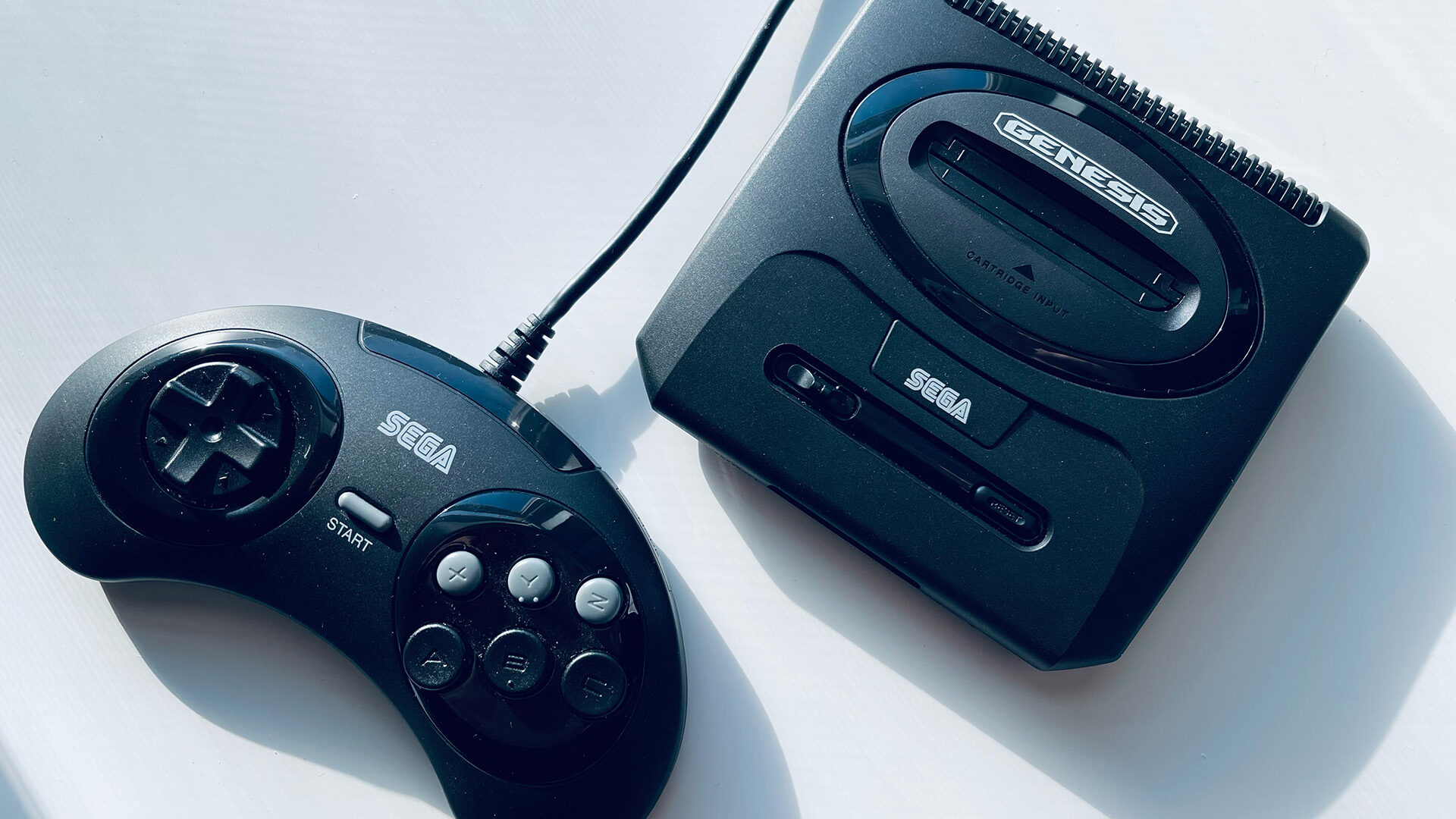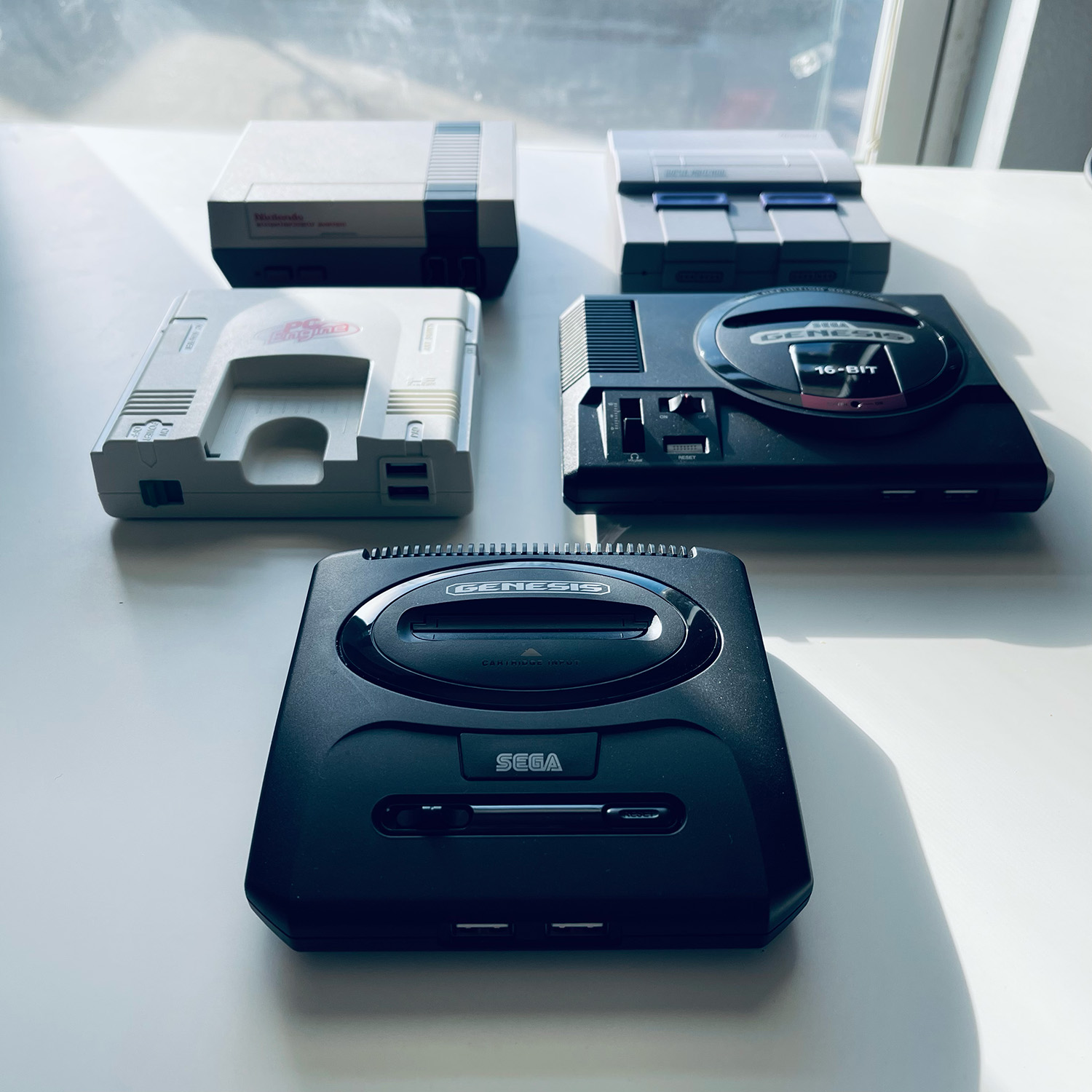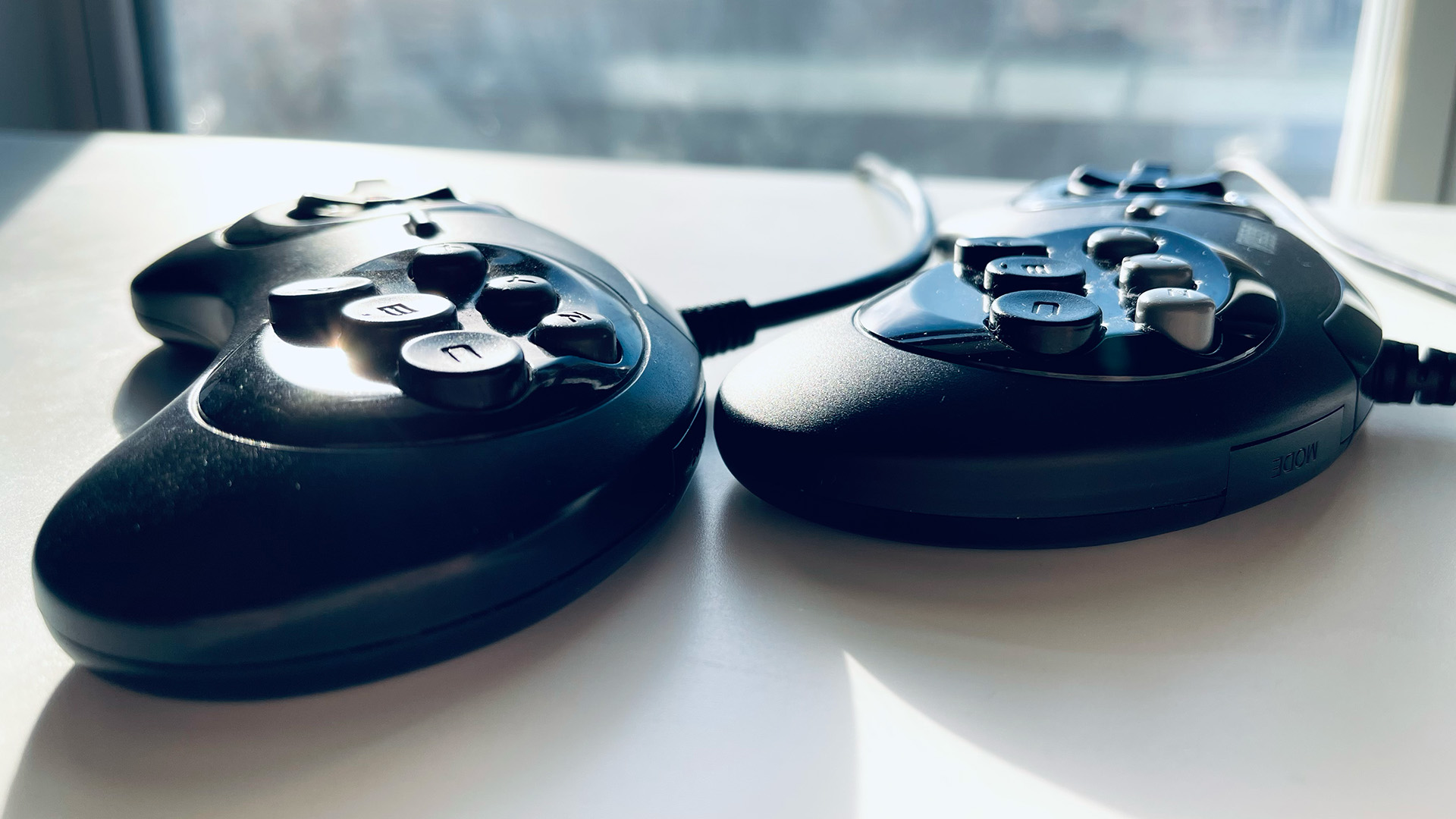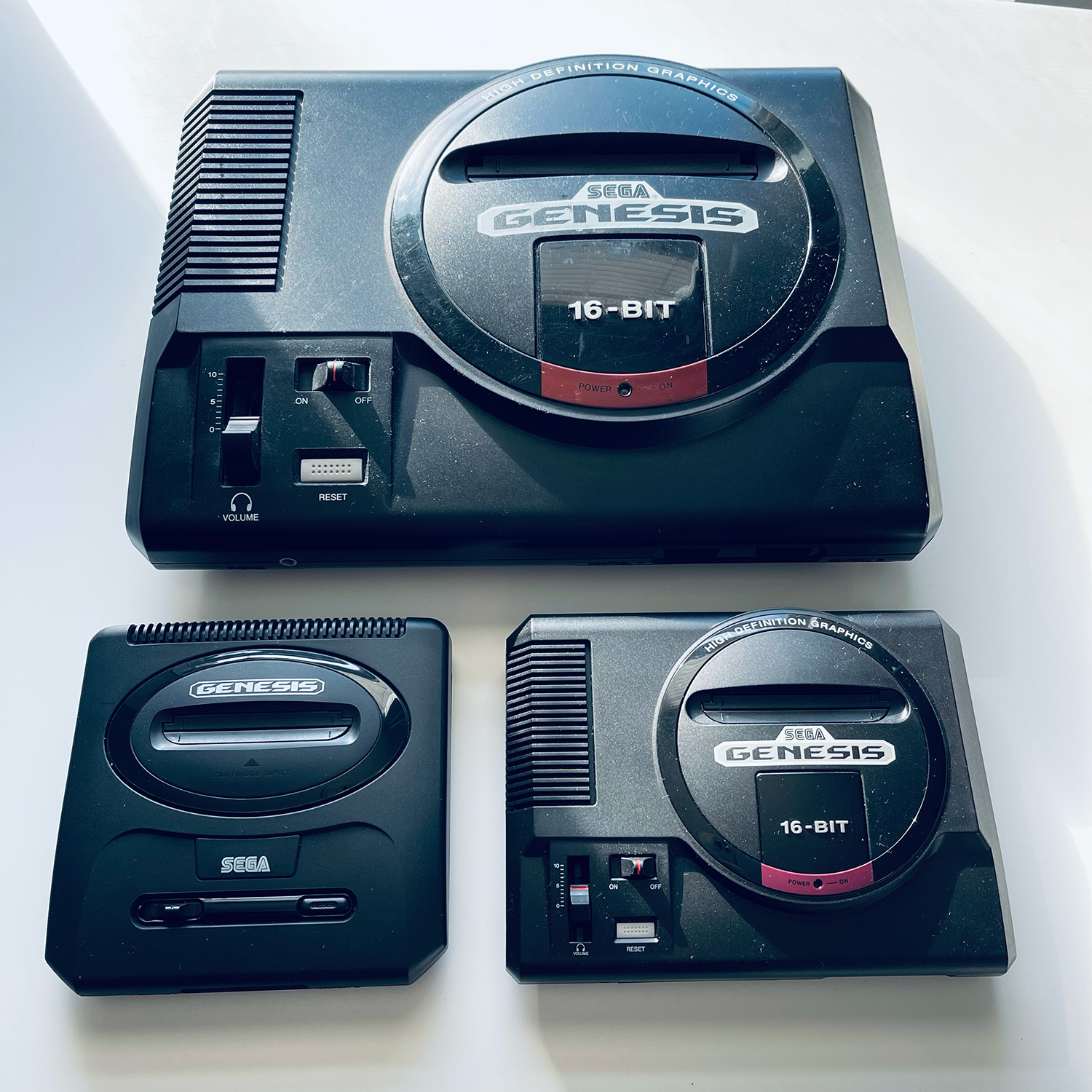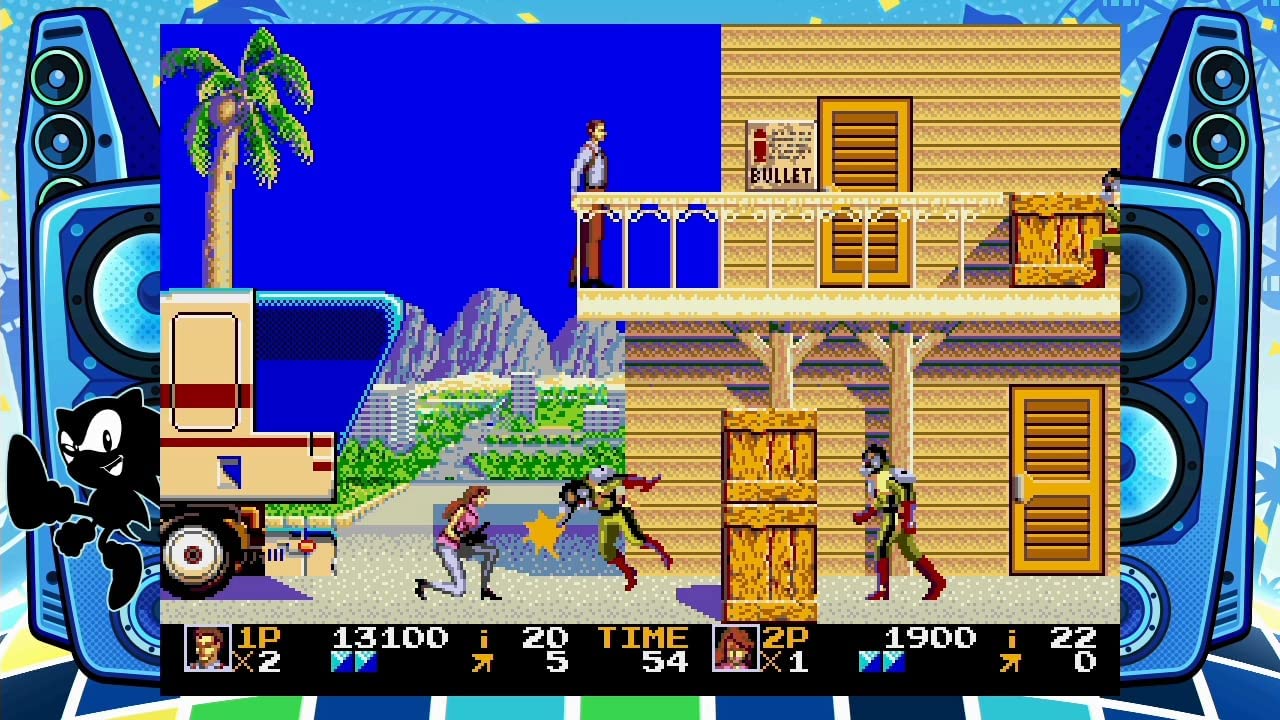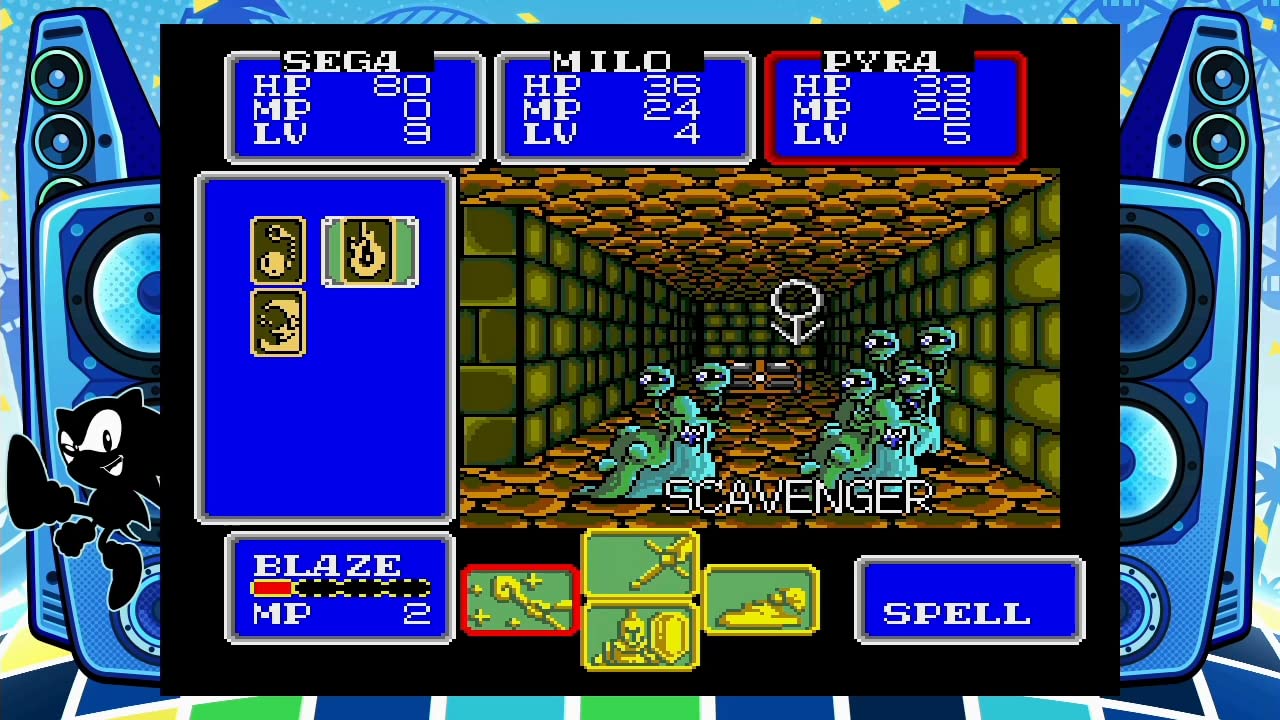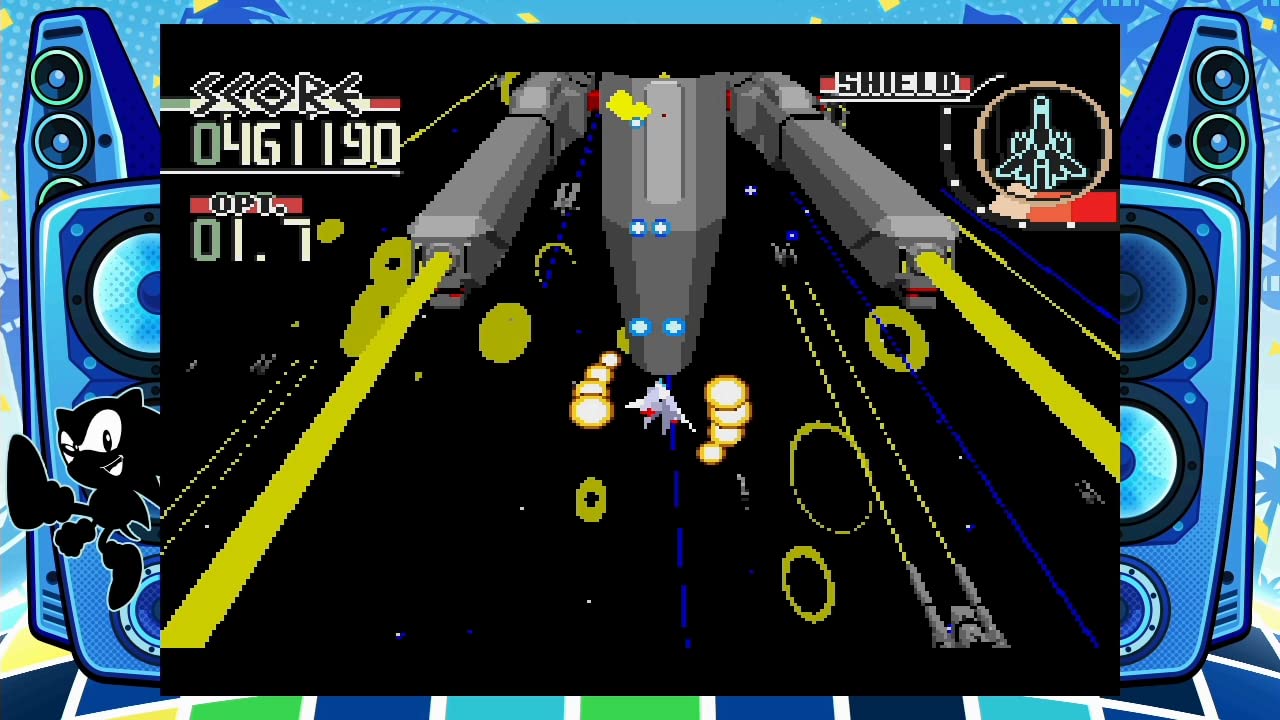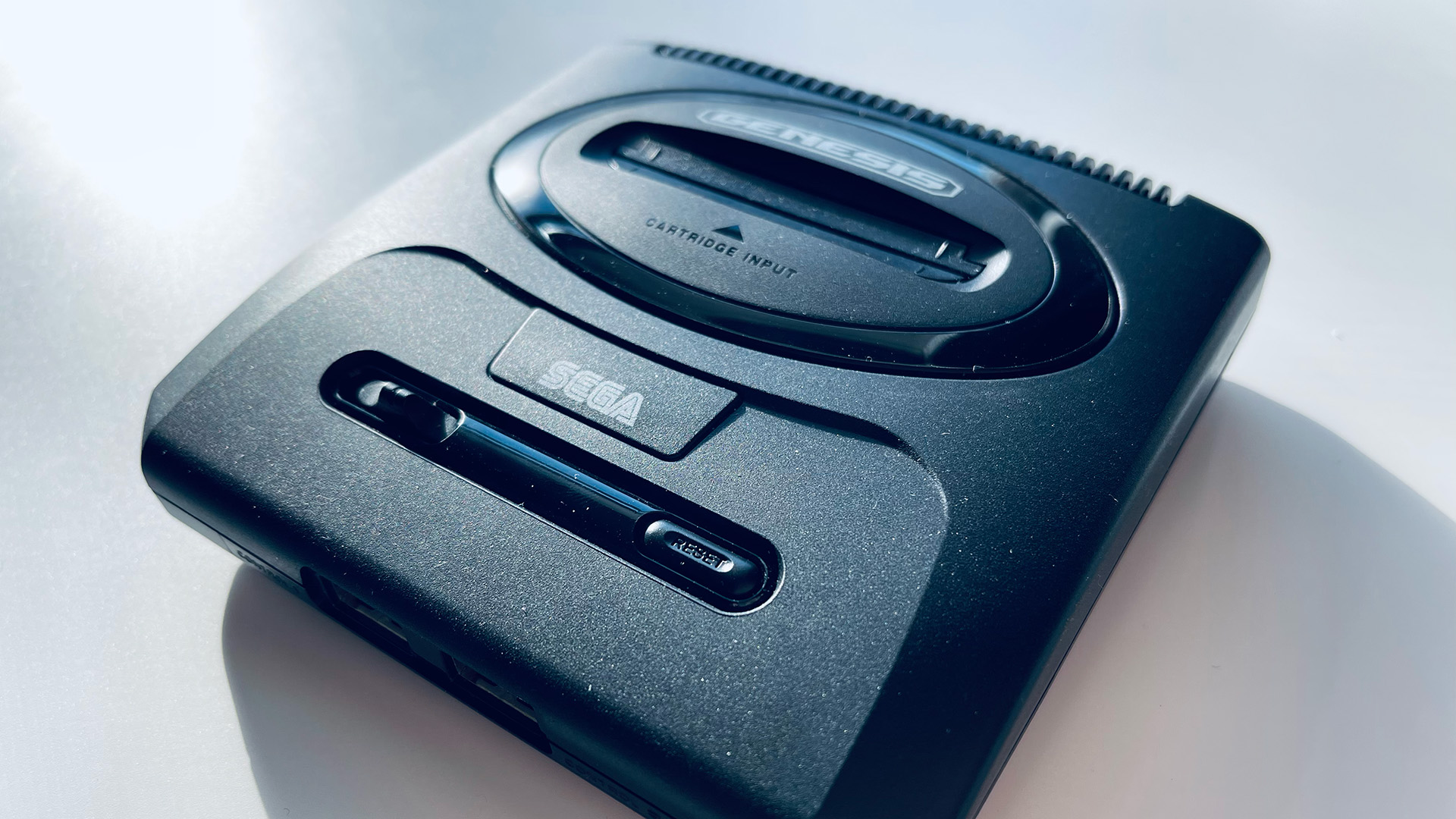Sega Genesis Mini 2 Review
The original Sega Genesis Mini was full of surprises. It was surprising that Sega originally considered farming it out to a third-party company with a poor track record for such things. It was surprising that Sega then actually listened to the concerns of fans and pulled the project in-house. And it was even a little surprising just how good the Genesis Mini turned out to be in the end, given how many things could have gone wrong.
What may be most surprising of all, however, is that we now have the Sega Genesis Mini 2. While alternate versions of all-in-one mini systems aren’t unheard of at this point, most of those efforts have been in the realm of arcade-focused products like the NeoGeo Mini or Sega’s own Astro City Mini. In most cases, companies have attempted to make one unit that’d serve as wide of a market as possible, and have that be the beginning and end of their plans.
As you’ll see as we delve deeper in the Genesis Mini 2, Sega seems to have been perfectly content going against expectations in putting together this system—and it’s certainly not a product intended to be all things to everyone.
Emulation
In my usage of the Genesis Mini 2, I’ve found it’s emulation to basically be on the same level as the original Genesis Mini. Put together once again by Japanese emulation masters M2, playing all of the included games feels comfortingly solid but not perfect. The input latency remains higher than original hardware, and the audio still lags if you pay enough attention. Like with the first Mini, I doubt many people will notice—but these issues are somewhat of a bigger deal this time around given the target audience this new unit seems to be going for (which we’ll get to shortly).
The biggest change on the Mini 2 is the lack of any of the double-input issues that were present on the previous model. I assumed that was because we have a much better default controller this time around, but then I discovered something unexpected. At least in my testing, if I plug in the chonky 3-button controller from the Genesis Mini, I still don’t seem to get unwanted inputs. Maybe it was a problem with the hardware itself, and not the controller, after all. Whatever the answer, I’m glad the issue is gone.
Finally, most of the base features of the Genesis Mini 2 are the same as what we had on the original. Changing the console language will give you different regional versions of certain games, and there are a handful of screen and wallpaper settings to choose from. The big surprise is that you can also choose between original Genesis or Genesis 2 audio output. If you don’t know why you’d change that setting, then you don’t need to. If, on the other hand, you know what I mean when I say that I prefer the sound of a “high definition graphics” Genesis, then this was a nice feature for M2 to include.
Hardware
The most obvious change between the Genesis Mini and the Genesis Mini 2 are their sources of inspiration. The original replicated one of the best-looking video games consoles of all time, while the Mini 2 takes after its far more generic replacement. I mean, look, the Genesis 2 wasn’t an ugly system by any means, but it’s hard to appreciate something that’s so boring in comparison to a piece of hardware that remains so iconic. (My fellow editors Josh and Michael told me that, as they grew up with the Genesis 2, they find its design more iconic. They are wrong.)
Opinions on the original hardware’s design aside, the Genesis Mini 2 does a great job of replicating that slimmed-down system in a smaller form factor. And, when I say smaller, I mean it. This is easily the miniest mini console I’ve ever seen, even beating out the PC Engine Mini. There are, though, two design flaws if we get nitpicky, both of which seem to stem from the lack of a proper Western model this time around. There’s no power light between the console’s two main buttons, and its power switch is a slide type (like on the Japanese Mega Drive 2), and not a push button type (like on the North American Genesis 2). And then, if we really want to pick nits, the cartridge slot is a tad loose when trying to use the replica mini cartridges that Sega released.
What’s important is that, as a unit crafted to offer access to playing a host of classic Genesis and Sega CD games, the Genesis Mini 2 does everything it needs to do. It then steps things up a notch by having a far better controller than the Genesis Mini brought with it. Sure, it only has one of those controllers, versus two the last time around, but I’ll take a single great pad over a pair of mediocre ones any day of the week.
An interesting element to the 6-button controller we get here is that it’s neither an exact replica of the original, nor is it the model that came with the Mega Drive Mini in Japan. Compared to the former, the top row of buttons sit differently, and unlike the latter, which were smaller in size, this one retains the same dimensions as the old-school Western 6-button pad. As well, the body’s plastic is now textured instead of smooth, and the Mode button is both more resistant and clickier.
My assumption is that this version of the Genesis 6-button controller may have some connection to—or basically be—the official replicas that Retro-Bit launched a few years ago. Having not yet used them myself, I can’t say that for certain, but it seems logical that Sega would work together with a company that’s already producing the accessories. Whatever its origins, the Genesis Mini 2 controller has been a joy to use, and is substantially better in every way over what we got with the original Genesis Mini.
Games
Finally, it’s time to dig into the games of the Genesis Mini 2. As opposed to the previous Mini, which offered 40 Genesis games and two bonus titles, things are a bit more complicated this time around. So, once we get past the full list of what’s included, I’m going to break things out into three categories: Genesis games, Sega CD games, and bonus titles.
Cartridge Games
|
Sega CD Games
Bonus Games
|
Genesis
If we compare basic Genesis games across both systems, then something quickly becomes clear: the original Genesis Mini was a far better option in terms of being a product for a wider range of players. In that library, we got timeless classics, casual favorites, beloved niche releases, hardcore hits, and a few titles that would cost a pretty penny to pick up physically at this point. No matter if you’re still a die-hard fan of Sega’s 16-bit system or you just want to relive your childhood, the Genesis Mini was—and still is, if you can find one—a great option.
The Genesis Mini 2, on the other hand, isn’t necessarily for everyone. There isn’t a single “standard” Sonic game to be found here, we get the second- or third-best chapters for a few franchises where we got the best ones previously, and there are plenty of names on here that you won’t know if you’re a more casual gamer.
Instead, the Genesis Mini 2 offers a library that’s geared more toward what us longtime Sega faithful would want from a follow-up system—but that isn’t necessarily a bad thing. Releasing a second mini console was always a risky proposition, so it kinda makes sense to target it more toward the people who would be likely to buy it. There are some real heavy hitters here as a Genesis fan, from the groundbreaking Herzog Zwei (one of the two games credited for kicking off the real-time strategy genre), to the hardware-pushing Ranger-X, to one of the best 16-bit shooters ever, Lightening Force(the ridiculous American name for Thunder Force IV), to Treasure’s legendary boss rush experience Alien Soldier, to Namco’s amazing Genesis-only sequel Rolling Thunder 2. Also included are other beloved games like Warsong, Splatterhouse 2, Gain Ground, Granada, Ristar, and Shadow Dancer, as are some releases that are prohibitively expensive to buy in their original forms at this point, such as Atomic Runner and Crusader of Centy.
However, the problem with Sega going in this direction is that the nonsensical inclusions and missed opportunities now stand out more than they did before. After Burner II and Outrun are both beloved Sega arcade hits but only mediocre home ports. Virtua Racing on the Genesis was a technical marvel for its time, but the luster has long worn off. Hellfire isn’t a bad game in any regard, but why give us that when there were so many other Toaplan titles to pick from, from meme machine Zero Wing(which never got a North American release back in the day) to more interesting shooters like Twin Cobra or Slap Fight? And, in the name of all that’s holy, what are ClayFighter and OutRunners doing on this system?
Again, it’s easy to become more critical of the Genesis Mini 2’s lineup given the system’s lessened focus on trying to have broader appeal. This is, all things considered, a great selection of games, but a few changes here or there could have made it truly special. You just gave us Sonic 3 & Knuckles on Sonic Origins Sega, you could totally have put them here as well. The Mega Drive Mini 2 features both Romance of the Three Kingdoms III and Columns III, and they’re both in English on it, so where are they? And I know that rights issues can be a mess, but when I see names like Renovation and Tengen, I ask why we don’t have Gaiares or Gauntlet IV (which M2 itself produced). I also ask why you’d hit up EA for Populous of all things, instead of something like Starflight or Haunting.
You almost nailed it, Sega. A few changes, and the Genesis Mini 2 could have been the perfect companion to the original Mini for us more devoted Genesis fans.
Sega CD
Ohhhh boy. Here’s where things really get fun—and where I run the risk of some of my fellow Sega fans turning on me.
First released in Japan at the end of 1991, the Sega CD was part of a wave of optical disc-based products meant to expand the capabilities of the 16-bit consoles. Unlike NEC’s CD-ROM², which increased the storage capacity for Turbografx-16 and PC Engine games but offered no other tangible benefits, the Sega CD gave games more data storage space to work with and more technical capabilities, such as sprite scaling and rotation.
In theory, it was a fantastic idea. In execution, it kinda sucked. Games that truly took advantage of those technological advancements were few and far between, leaving us with a glut of releases that were either just Genesis ROMs with fancy soundtracks, or “games” that built upon the full-motion video fad. There were just over 200 titles released for the system, so it wasn’t the total failure that plenty of other add-ons have been. And yet, as someone who still remembers getting a Sega CD right after it launched, it never truly came into its own across the five years it was on the market.
So, Sega adding CD titles to the Genesis Mini 2 is a mixed bag. On the plus side, it means we get some of the best the platform had to offer, most notably Sonic CD, Final Fight CD, and Shining Force CD. Sonic CD brings both its Japanese and North American soundtracks with it, the latter of which, along with the CD versions of the two Ecco the Dolphin games, let our ears bask in the glory of composer Spencer Nilsen’s musical talents. There’s a few other fun curiosities along for the ride as well, from genuinely decent games like Silpheen and Robo Aleste, to guilty pleasures like Mansion of Hidden Souls, to the utterly hideous looking yet still intriguing home port of Night Striker.
However, given that we only get 12 Sega CD games in total, it’s hard not to be somewhat disappointed. Trademarks of the add-on or not, both Night Trap and Sewer Shark are complete garbage that are just taking up space. Some major releases that would have skyrocketed the value of the Genesis Mini 2 are missing, most notably Snatcher, Soul Star, Road Avenger, and Keio’s Flying Squadron. In the Genesis library, we’re given yet another way to play Street Fighter II at home, but we couldn’t get Samurai Shodown CD?
And then, let’s address the elephant in the room. On the Mega Drive Mini 2, Japanese owners received Lunar: The Silver Star, Lunar: Eternal Blue, and Popful Mail, three beloved games from the platform. Sega reached out to the man who still owns the rights to their English translations—Victor Ireland of Working Designs infamy—and the two sides couldn’t come to an agreement on compensation. Yes, it sucks, and it makes the Genesis Mini 2’s Sega CD library notably weaker in comparison, but let’s also take a moment to be honest here. In the year 2022, I refuse to believe that most people would actually want to play through the Lunar games again. They were great for their time, but like so many other RPGs from the 16-bit era, they’ve aged like milk. You might think you would have gone through them again, but you weren’t really going to.
If we think of the Genesis Mini 2’s roster of Sega CD games as some extra freebies on top of the Genesis offerings we were already getting, then they’re a nice inclusion that makes the unit a better product. If, on the other hand, you were looking at the Mini 2 as a way to go back to relive what the Sega CD had to offer, then I think you’re likely to be disappointed. Many of the system’s best experiences are missing here, and that’s a shame.
Bonus Titles
On the original Genesis Mini, Sega and M2 gave us two pretty awesome bonus inclusions: Mega Drive Tetris, which was notoriously pulled from sale just as it was about to hit store shelves, and a port of arcade shooter Darius created by a single dedicated fan.
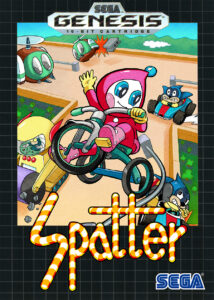 This time around, we get eight bonus games, each of which boasts some special note to its inclusion. Devi & Pii and Star Mobile are resurrections of previously unreleased projects for the system; Fantasy Zone, Spatter, Super Locomotive, and VS Puyo Puyo Sunare completely new Genesis ports developed by M2; and Space Harrier II not only now features far smoother sprite scaling (at the expense of increased object flicker), but it’s also brought a completely new port of the original Space Harrier with it.
This time around, we get eight bonus games, each of which boasts some special note to its inclusion. Devi & Pii and Star Mobile are resurrections of previously unreleased projects for the system; Fantasy Zone, Spatter, Super Locomotive, and VS Puyo Puyo Sunare completely new Genesis ports developed by M2; and Space Harrier II not only now features far smoother sprite scaling (at the expense of increased object flicker), but it’s also brought a completely new port of the original Space Harrier with it.
Even better, some of the main library titles on the Genesis Mini 2 have seen very welcome enhancements. Lightening Force now features the ability to reduce some (but not all) of its slowdown, Truxton has a fix for its out-of-sync music, and Phantasy Star II offers a new easy mode that comes with a welcome increase in walking speed. M2 has long had a lot of passion for these kinds of projects, and the studio’s efforts here clearly reflect that. The extras we get far outshine those of the Genesis Mini, to the point that they alone could be enough to warrant a longtime Sega fan picking up the Mini 2.
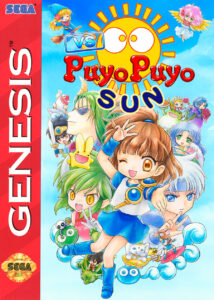 Still, I’m not sure how much value all of these bonuses will have to a larger audience. I’ve come to genuinely enjoy Spatter and Super Locomotive, but they’re both incredibly niche titles. I’m ecstatic to finally get a Genesis port of Space Harrier, but the sprite flicker that was necessary to make it happen won’t be easy for everyone to stomach. Devi & Pii and Star Mobile are valuable for game preservation, but maybe not as much for their gameplay.
Still, I’m not sure how much value all of these bonuses will have to a larger audience. I’ve come to genuinely enjoy Spatter and Super Locomotive, but they’re both incredibly niche titles. I’m ecstatic to finally get a Genesis port of Space Harrier, but the sprite flicker that was necessary to make it happen won’t be easy for everyone to stomach. Devi & Pii and Star Mobile are valuable for game preservation, but maybe not as much for their gameplay.
And, while I find VS Puyo Puyo Sun a pretty neat addition as someone who likes the competitive side of the series, Sun has never been my go-to in that regard. (Now, if M2 was crazy enough to try to port Puyo Puyo~n to the Mega Drive, that alone would sell me a system.)
Final Thoughts
The Sega Genesis Mini 2 is an incredibly interesting product. There was no burning demand to have a second classic console based on the company’s 16-bit efforts, and it would have been incredibly easy to just give us something that mostly mimicked the original Mini after a library refresh. Instead, there’s been a respectable amount of effort put into what we’re given here, with a selection of Genesis, Sega CD, and bonus games that—outside of some missteps—seem specifically targeted at us loyal Sega fans. We get to enjoy all of those games with a fantastic controller that’s so much better than we received the first time around.
And yet, it’s harder this time around to ignore the Mini 2’s weaknesses when they show up. With the original Genesis Mini, the product we got felt like such a win given what could have been. Now, with this more hardcore-focused second release, the faults in M2’s emulation, the low points of the game library, and the missed potential of the addition of Sega CD titles are more apparent than they might have been otherwise. There’s also the obvious sore spot of how hard it can be to get the console in the first place for those of us in the West.
The big question now is if you should pick up a Sega Genesis Mini 2, and that’s a hard answer to give. While I don’t like playing the FOMO game, Sega only produced around 10% as many Mini 2s and they did the original Mini, so if this is something that you want, then I’d recommend considering it sooner rather than later. If you enjoyed the original Mini and want to explore the Genesis deeper, then there’s a lot of good waiting here. And, if you’re a Sega devotee who appreciates getting more access to the lesser-known parts of the company’s history, then the bonus games offered here make this a nice product to have.
If, on the other hand, you just want the chance to play some Genesis games, or you’re already decked out with plenty of ways to do so, then the Sega Genesis Mini 2 might not be for you. This is a very good way to step back in time and relive the 16-bit era—but with so many ways to do just that at this point, sometimes “good” isn’t enough.
Sega Genesis Mini 2
Summary: After initially feeling a bit cold on the Genesis Mini 2, I’ve come to be pretty impressed with Sega’s second attempt at a classic console. As a longtime fan of the company and its releases, there are a lot of great games here, and developer M2 has put a large amount of care and effort into fleshing out the system’s library with interesting bonus titles or improvements to games. At the same time, it’s impossible not to acknowledge that the Mini 2 is a less friendly and robust product for the large group of casual players who may have picked up the original Genesis Mini. This is definitely not for everyone—but if it is for you, then it’s got a lot to offer.
Score: -
Sega Genesis Mini 2 was reviewed using review code, physical copies, or hardware provided by Sega of America. Scores are graded on a scale of E (Bad) to S (Special) in homage to Japanese video game grading scales, with the understanding that an S still does not denote a "perfect" score. Scores may have been adjusted from the original source to better fit my personal scale.
